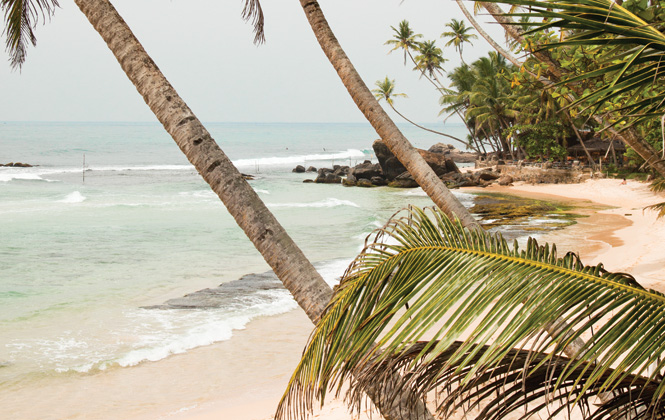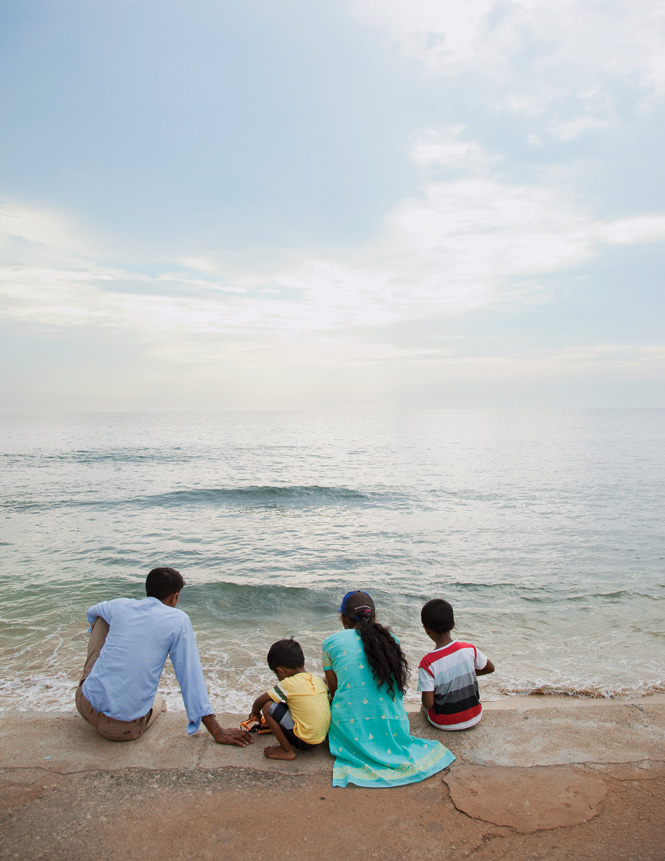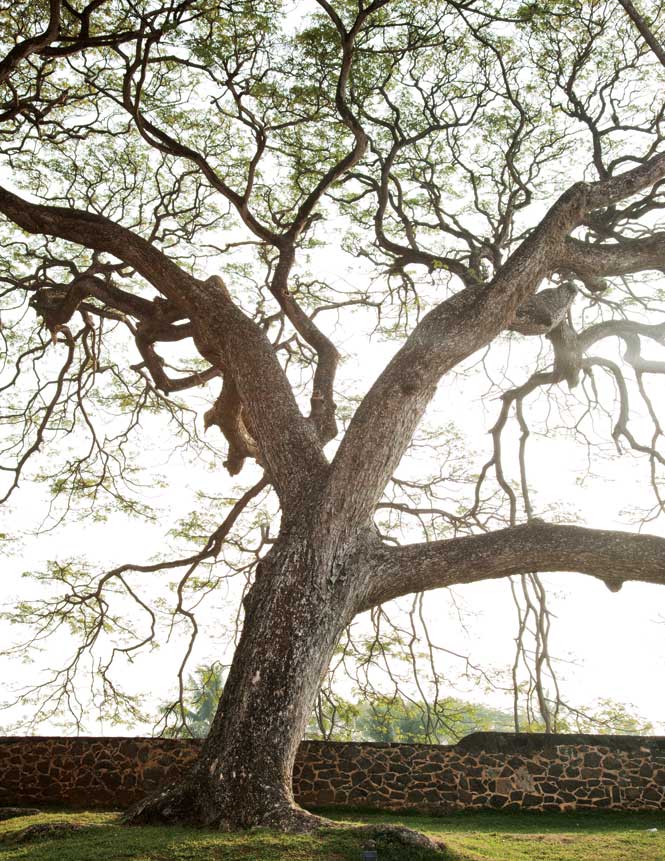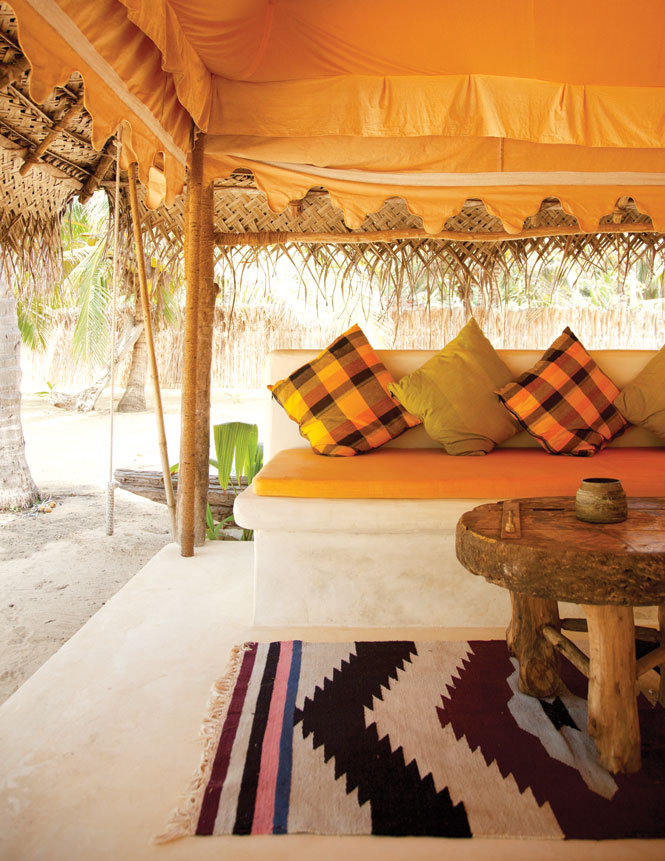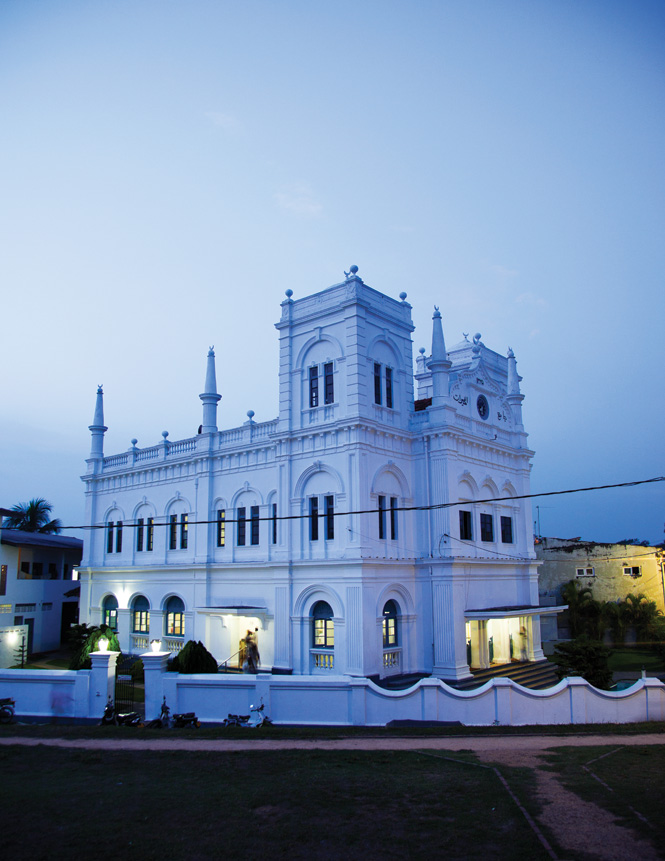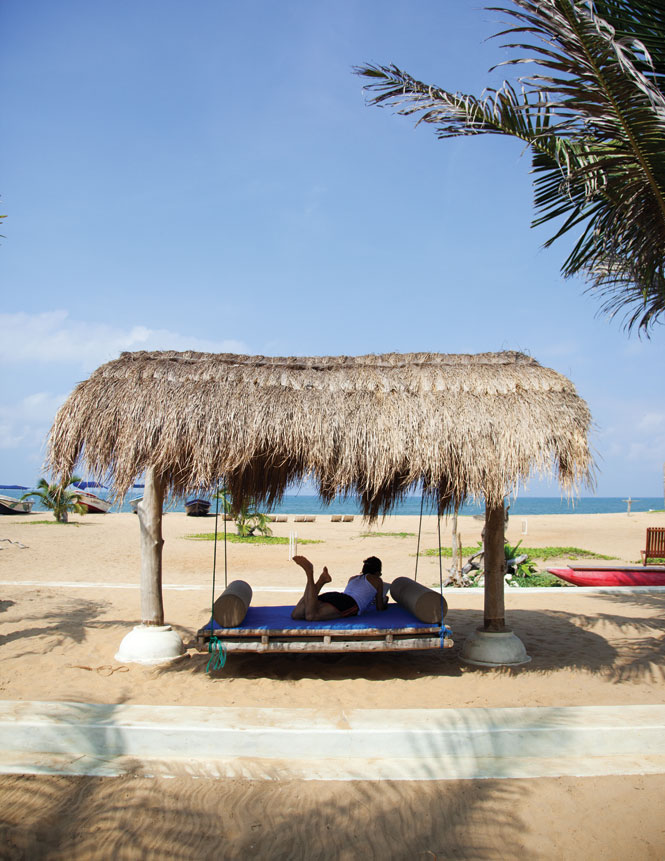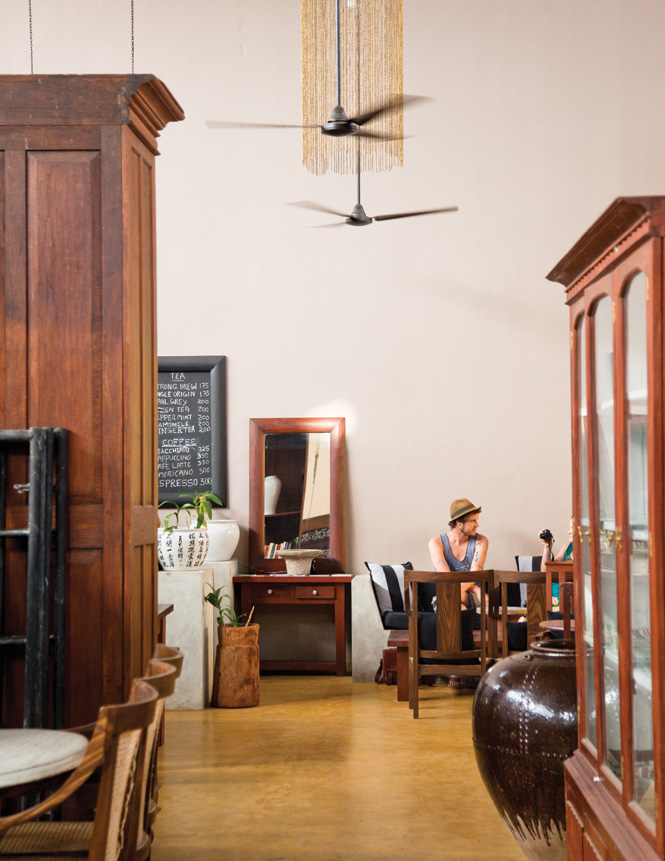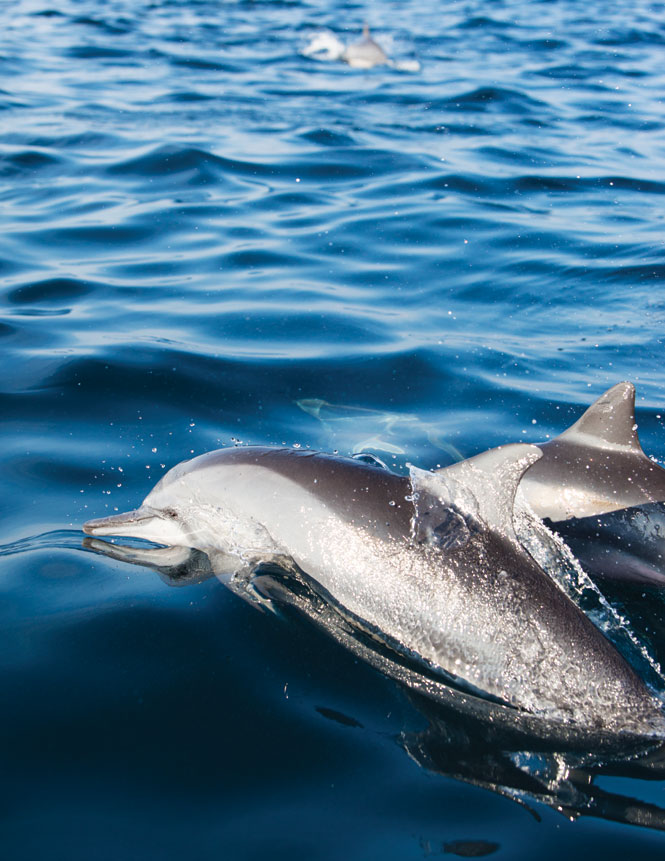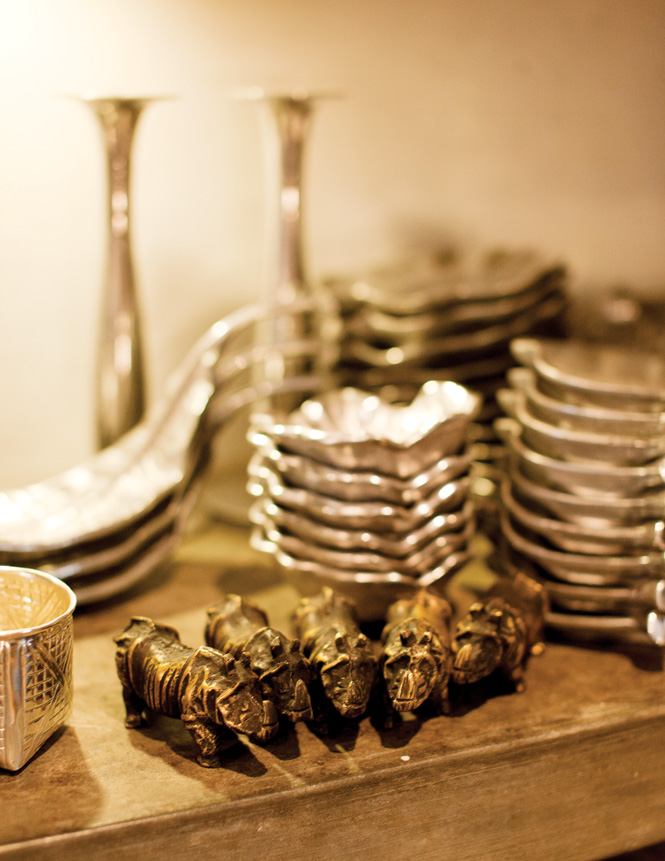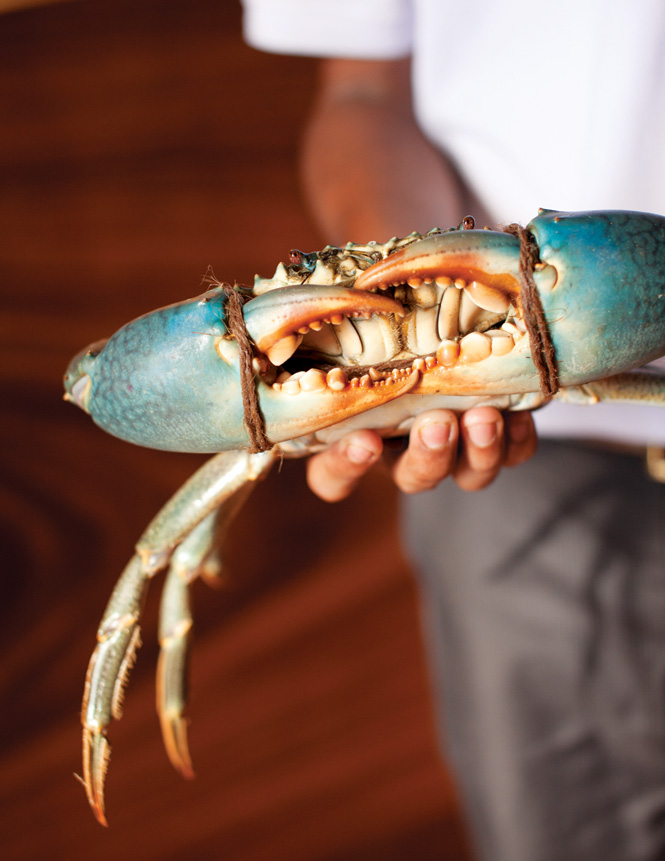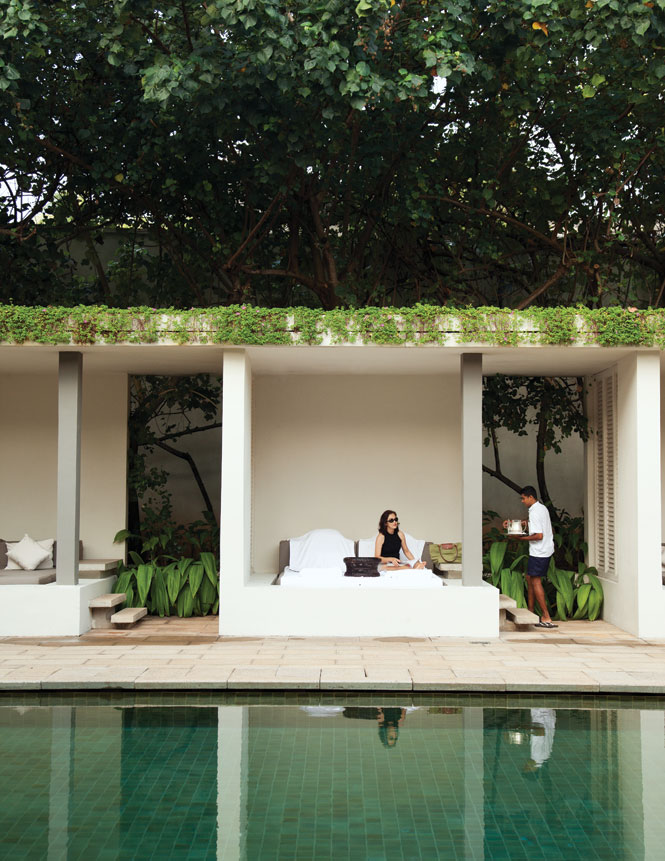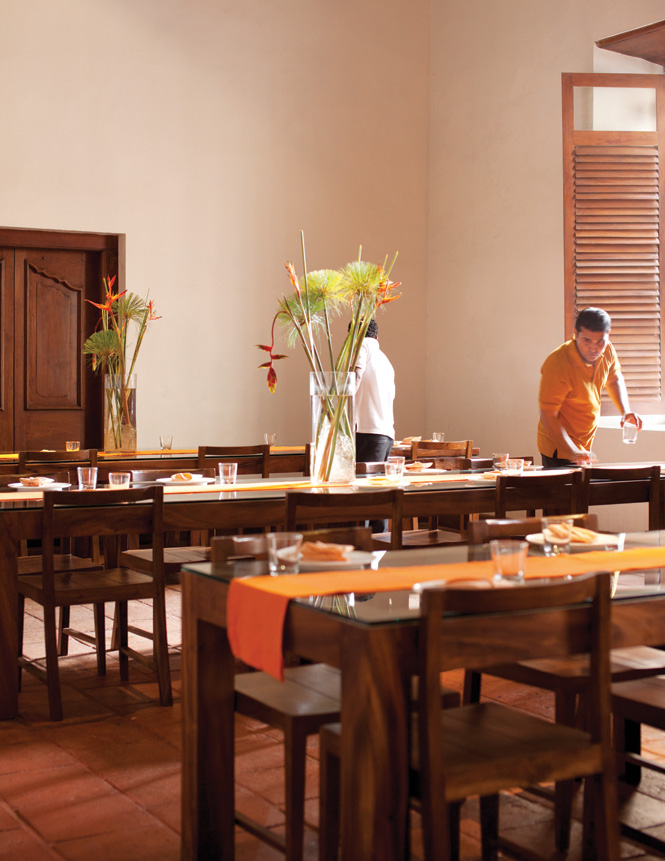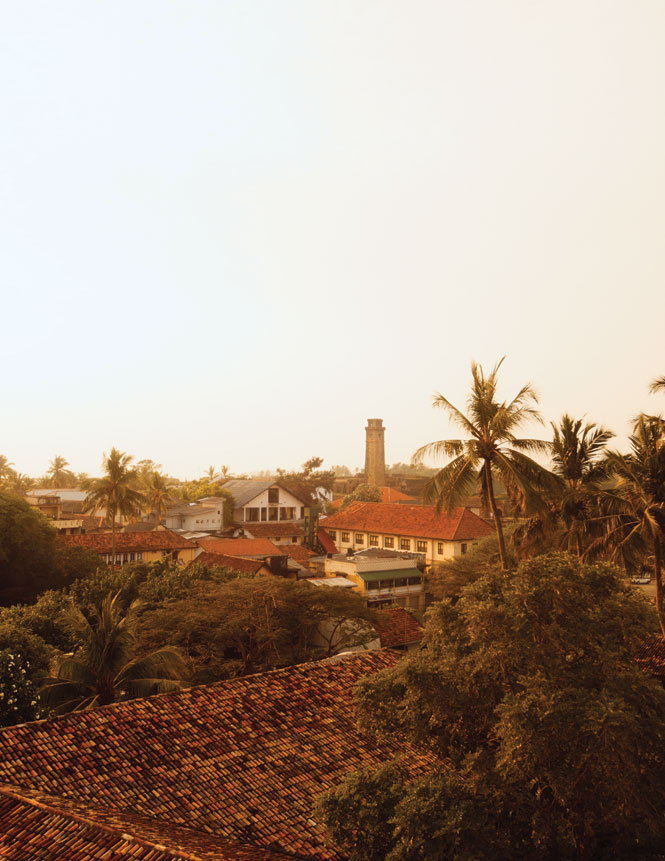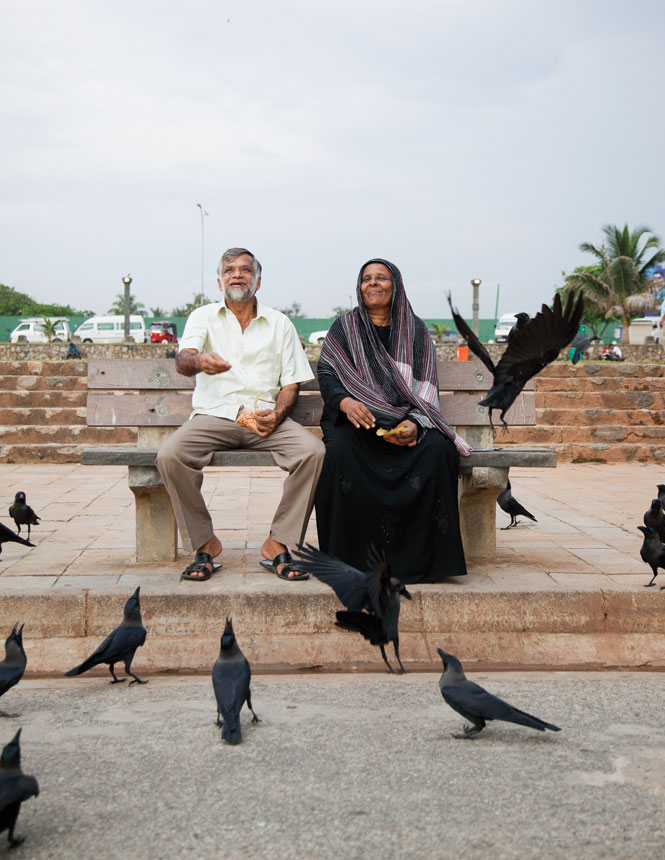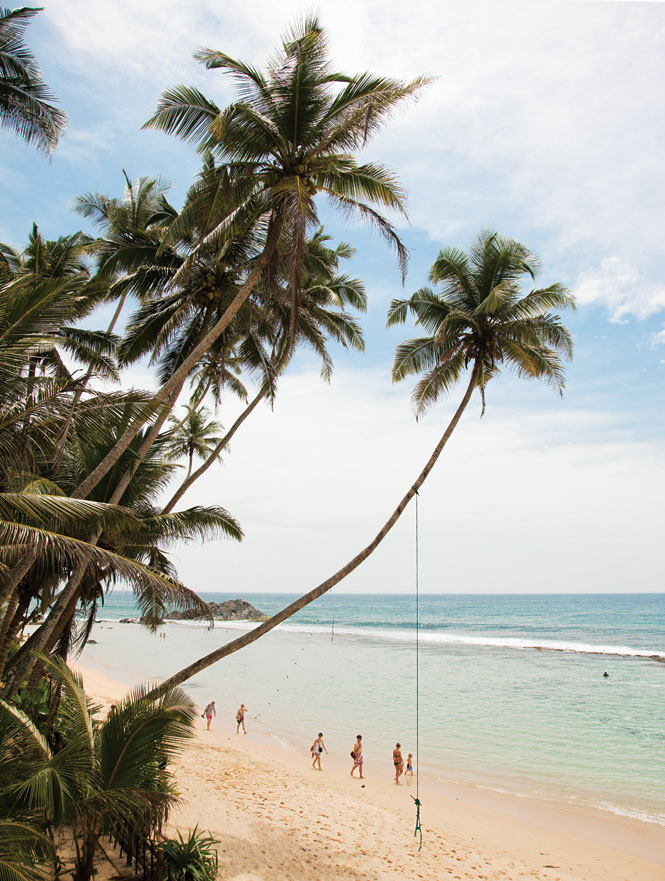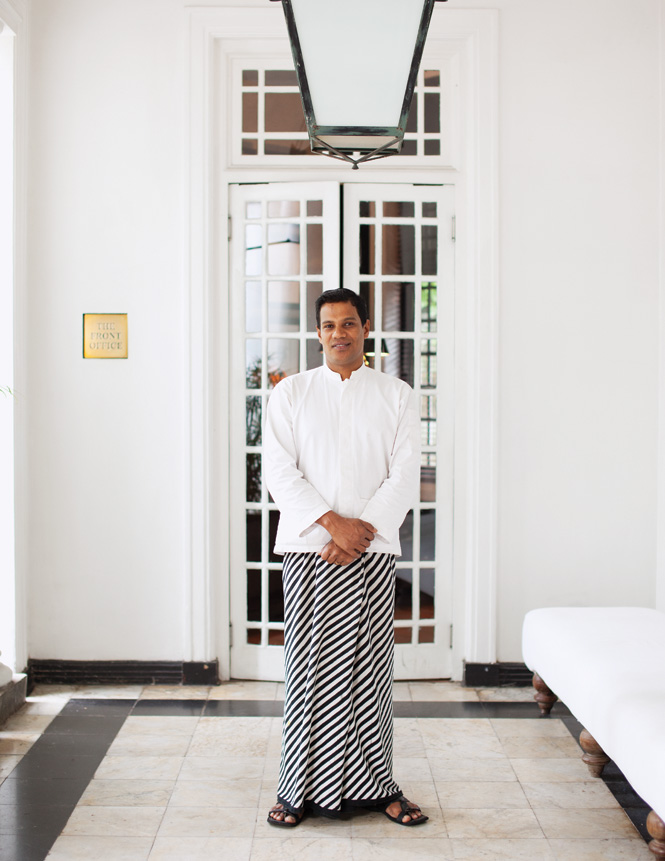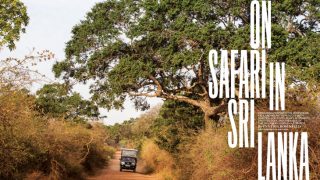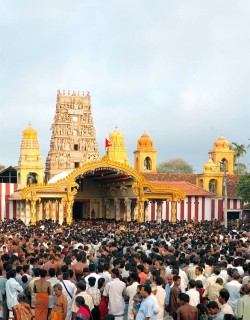Above: Palm-fringed Unawatuna Beach, near Galle.
Three years after the end of its protracted civil war, this beautiful island nation is once again on the rise. But can Sri Lanka finally leave behind the troubling legacy of the brutal conflict?
By Jennifer Chen
Photographs by Lauryn Ishak
Like so many international flights into Colombo’s Bandaranaike Airport, mine arrives in the dead of night. I feel like an emissary to some shadowy land. The terminal is deserted, save for a few taciturn immigration officers and a handful of clerks half-heartedly trying to peddle whisky, perfume, and large household appliances to returning Sri Lankans flush with cash.
Above, from left: A lounge space at Dolphin Beach Resort in Kalpitiya; Galle Mosque, a landmark from the early 20th century; a lazy day at Dolphin Beach; the bakery counter at the café at Olanda, an antiques emporium in Galle Fort.
It’s dark, too, along the two-lane road that takes me from the airport into town. Streetlights are scarce, and the most consistent source of illumination is a panoply of brightly lit Catholic statues encased in glass. A robust Jesus stepping forward, arms outstretched; a blue-robed Virgin Mary; the Pietà, Jesus now gaunt and bloodied; St. Sebastian, his body pierced through with arrows.
Above, from left: Inside the café at Olanda; spinner dolphins off Kalpitiya; hoppers, Sri Lanka’s quintessential snack; Colombo boutique Paradise Road Studio stocks chic homeware and furnishings.
Some countries leave you with only fleeting impressions. This is becoming especially true in Asia, where the headlong rush into mo-dernity has created a depressing sameness. Cities are dominated by gargantuan malls and anonymous glass office towers. Drives into the countryside entail passing through dreary towns of KFCs and gas stations. Head out of Kathmandu or Ho Chi Minh City, and you’ll see half-built concrete buildings and fields littered with plastic bags and empty water bottles.
Sri Lanka, however, will haunt you long after you’ve left. More than a decade after my first visit, my recollections of the place remain vivid. There were more military checkpoints back in 2000, but there were also images drawn straight from a Graham Greene novel, like the sarong-clad man riding an antique bike through a downpour in Colombo, his back ramrod-straight as he held aloft a battered black umbrella. Or the waiters in crisp white jackets at the Galle Face Hotel, who decorously called me “Madame” as they served breakfast on the sea-facing veranda.
But you knew—everyone did, even the most oblivious package tourist—that the reason for Sri Lanka’s time-warp charm was war. A nasty, 26-year-long civil war with Tamil separatists—and briefly, ultranationalist Sinhalese Marxists—in which atrocities were committed by all sides. The island’s great beauty, set against even greater tragedy, lent a certain sharpness to my memories of that first trip, as did such absurd vignettes as the Christmas dinner I shared with a group of posh Sri Lankans and expats in a cozy rain-forest inn. An Englishman—pony-tailed, dressed in white, sitting cross-legged on the floor—recalled seeing bodies by the side of the road nearly every morning during the height of the 1980s Marxist rebellion in the south. He then told us of his plans to build an Ayurvedic resort nearby where Notting Hill housewives would sit in mud huts, smeared with goat shit. “I’ll charge two hundred quid a night,” he said.
In 2009, government troops decisively crushed the Tamil Tigers, killing their cultish leader. When the end finally came, it was swift and brutal. Rebels used human shields, shot those trying to escape, and press-ganged teenagers into their diminishing ranks. The government shelled civilian targets, including hospitals. The United Nations estimates that tens of thousands of civilians died in the final stages of the war. But independent witnesses are scarce; journalists and aid workers were barred from the battlefield.
As troubling as the methods used to win the conflict were, no one could begrudge the relief that the island was finally at peace, and, nearly three years on, Sri Lanka’s once-beleaguered tourism sector is booming. Hotel companies such as Shangri-La, Six Senses, and Anantara have announced plans to enter the market. Existing hotels are already booked solid. More than 850,000 tourists visited last year, and those figures are expected to swell to 2.5 million by 2016.
For 11 years, I hadn’t been able to shake my memories of Sri Lanka. It was time to go back.
In daylight, one thing becomes immediately apparent: Colombo is no longer a city under siege. Stately colonial buildings once en-shrouded in barbed wire behind concrete walls are now clearly visible, many with fresh coats of paint. Sentry booths have vanished, and heavily armed soldiers guard only government buildings. Galle Face Green, the half-kilometer-long seaside promenade carved out by the British in the 1850s, is again completely open to the public. In my memories, Colombo was a city of mildewed buildings and cast-off Japanese buses. Today, with its wide-open spaces, tree-lined avenues, chaotic traffic, and whitewashed villas, the place is barely recognizable.
A 17th-century Dutch hospital that once served as an army barracks now houses upscale restaurants, cafés, and boutiques. Soldiers carried out the renovation work, says Dharshan Munidasa, the genial chef who owns the Ministry of Crab, one of the building’s new tenants. Most of the other restaurants are half-empty—the hospital has only been open for a few weeks. Munidasa’s is the exception. Well-heeled Sri Lankans pack the communal tables, while line cooks move swiftly around the kitchen preparing the house specialty of crab, which come in sizes ranging from small to “colossal.” We’re able to secure a table only thanks to a phone call placed by a well-connected acquaintance.

